 There’s been a rash of articles about “touch DNA” this year, which is, as far as I can tell, another name for what is already known as Low Copy Number (LCN). LCN is a method of getting DNA profiles from very small samples, like a fingerprint (hence the alternative name “touch DNA”) and it was developed in the UK. Although one article I found stated that it’s not the same, it looks like that’s not correct. Perhaps a forensic scientist will email or comment with a definitive answer.
There’s been a rash of articles about “touch DNA” this year, which is, as far as I can tell, another name for what is already known as Low Copy Number (LCN). LCN is a method of getting DNA profiles from very small samples, like a fingerprint (hence the alternative name “touch DNA”) and it was developed in the UK. Although one article I found stated that it’s not the same, it looks like that’s not correct. Perhaps a forensic scientist will email or comment with a definitive answer.
While I was researching this I saw that there was a problem last year in the UK with a case with LCN evidence, and using LCN evidence was suspended for a period. However, according to an April 11 BBC article, which gives an excellent overview of how LCN analysis is done, the government commissioned a study which concluded that the method was sound. A quote from Professor Brian Caddy: “The technique… is scientifically robust and appropriate for use in police investigations.”
I also came across other criticisms of the process, but I couldn’t get access to one intriguing article at nature.com: LCN DNA: proof beyond reasonable doubt?, by Carole McCartney. A debate has evolved in response to this piece, but you have to have an account to read the article and the responses to it.
When I wrote my book the Office of the Chief Medical Examiner in New York was not equipped to do LCN analysis, but I heard that now they can. In fact, I’ll bet that’s why this name “touch DNA” is making the rounds. It used to be that you had to send samples to the UK (or Canada, too I believe) to get LCN analysis. But now that several commercial labs in the U.S. can do it, they’re probably trying to brand the process with this other name, and they sent out a bunch of press releases which resulted in a wave of articles about “touch DNA.” Just a guess. (If it turns out that LCN and touch DNA are two entirely different methods of analyzing small DNA samples my guess is wrong.)
The picture above is from the BBC piece I cited and linked to.





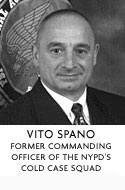
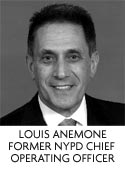
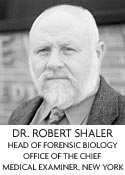
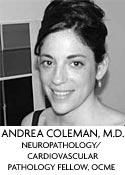
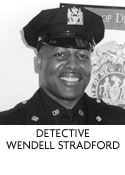
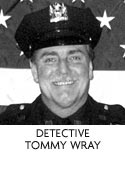
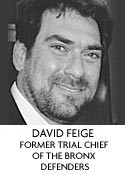
10 responses so far ↓
1 Will Cook // Oct 22, 2008 at 12:00 am
I am a Forensic Detective in Albany, N.Y. and I’m doing my masters thesis at National University on the cross transfer of DNA from latent fingerprint brushes (based on LCN DNA). I might cite this source.
PS. The book looks really good, my wife will love it!
Thanks.
2 Stacy Horn // Oct 22, 2008 at 9:33 am
Hi Will! Good luck with the masters! I’m jealous. I loved graduate school, and now I envy you, being in school and studying something so fascinating. And that on top of the work you do.
The issue of cross transfer never occurred to me. That could be a serious problem, no? Except it could be solved by using new brushes each time?
3 Susan Fowler // Jan 26, 2009 at 8:14 am
Hi, I’m a CSI in Manchester, UK and this is something we try to overcome by using new fingerprint brushes and new pots of powder at scenes where LCN may be recovered. Sometimes this may not be possible and needs to be considered by the Forensic Scientist who is responsible for the expert witness analysis in court. Although we swab for LCN DNA at a great many crime scenes nowadays it is rarely used in court – its mainly for intelligence.
Because of different companies trademarking different names for their particular DNA analysis we no longer exhibit swabs as LCN DNA swabs, but just as ‘Wet & dry swabs from ….etc’.
4 Stacy Horn // Jan 29, 2009 at 2:56 pm
Oh wow, welcome to my blog, Susan. And thank you so much for that information. I hope you’ll stop back from time to time and share your experience!
That’s interesting about it mostly being used for intelligence. I’m researching something else right now, audio forensics, and it’s the same. Rarely used in court, mostly used to narrow down the group of suspects.
5 clint e voelm, ph.d. // Mar 5, 2009 at 1:24 pm
hi. I am doing a research article that demonstrates how dna is utilized inn the criminal justice arena. How can I get in touch with Will Cook who is a forensic detective and has researched “touch dna” and any other individuals like myself who have investigated this unique research tool? Thank you: http://www.jonev14@verizon.net
6 Liesl De Silva // Jul 11, 2009 at 7:34 pm
Hi, I’m a post-graduate student at the University of Glasgow and I’m currently doing my dissertation on LCN DNA typing and how much it can tell us. I’m also expanding on it to include a molecular “photo” fitting of a perpetrator from a sample of DNA and where we have reached in our research on that aspect (don’t knwo how it’s goign to turn out though and I have only 1 month left!!)
I managed to obtain the article of Carole McCartney that you mentioned, it’s extremely interesting and talks about the controversies associated with LCN DNA typing and she has also received a response to the article from Peter Gill who has been doing quite a lot of work on LCN DNA. If you haven’t already obtained the articles, I could mail them to you if you like..:)
7 Stacy Horn // Jul 13, 2009 at 12:54 pm
Liesl, how nice of you to offer. I’m going to email you.
8 Dr Nupur Talwar // Aug 4, 2009 at 1:33 pm
Dear stacy , i am the mother of a murder victim .Desite some forensic investigation the culprits are free today,i feel more forensic testing is needed i would appreciate if you could send me your email so that i could write to you about the case and maybe you could help us in leading the investigators in the latest forensic techniques to enable our 14 year old daughter to get justice
9 Stacy Horn // Aug 4, 2009 at 3:41 pm
I am so sorry about your daughter. There’s a link to my email here and also pages of advice. But what test wasn’t done that you would like to see done? I will email in case you don’t come back to see this.
10 Allan Jamieson // Aug 24, 2009 at 11:16 am
Liesl
Please contact me at The Forensic Institute. I am the scientist who challenged LCN in the Omagh case (and others).
Leave a Comment